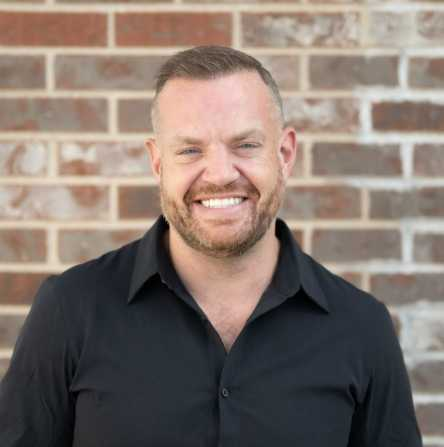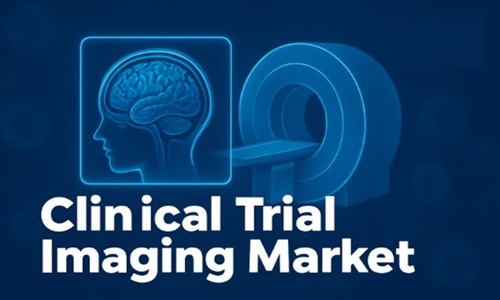Introduction
Matthew Oldford Nova Scotia has emerged as a thoughtful and disciplined leader in the region’s residential renovation and development sector. As the founder and owner of Matty Renos, he has cultivated a professional identity rooted in meticulous craftsmanship, structured project management, and an unwavering commitment to delivering homes that perform well for years rather than seasons. His work reflects a modern understanding of what homeowners value: functional spaces, durable materials, energy efficiency, and a renovation process that feels predictable, accessible, and transparent. In a province where architecture ranges from historic coastal homes to newer suburban developments, Oldford’s ability to adapt solutions to each property’s unique needs has established him as a trusted figure within Nova Scotia’s ever-evolving housing landscape.
This article provides a natural, polished, and comprehensive overview of Oldford’s career, methods, and growing influence. It examines his early foundations, the creation of Matty Renos, the principles guiding his design-build process, and his broader impact on sustainable building, real estate investment, and community engagement.
Early Foundations and Insights into Residential Construction
The professional development of Matthew Oldford Nova Scotia began well before the launch of his company. His early years were spent working directly within residential construction environments, where he encountered a broad range of property types reflecting the province’s architectural diversity. These experiences exposed him to structural inconsistencies, aging materials, climate-sensitive building requirements, and the importance of sequencing construction tasks in a logical, efficient manner.
Through hands-on work, he developed enduring insights:
cosmetic changes are irrelevant unless supported by a sound structure
building materials must reflect both longevity and regional climate performance
coordinating skilled trades requires discipline and proactive planning
homeowners rely on clear communication, especially during disruptive projects
functional design often outperforms visually complex or overly stylized choices
These foundational lessons shaped Oldford’s commitment to quality and his appreciation for the rigor necessary in well-organized renovation work.
The Founding of Matty Renos
Motivated by a desire to elevate the renovation experience for homeowners, Oldford launched Matty Renos, a company grounded in transparency, efficiency, and client collaboration. Many homeowners enter renovation projects with uncertainty about costs, timelines, and contractor reliability. Oldford recognized these barriers and structured Matty Renos to eliminate the confusion and fragmentation that frequently undermine renovation success.
Today, the company is known for:
accurate up-front assessments
organized timelines aligned with realistic project scope
structured design-build workflows
transparent communication methods
thoughtful material recommendations that balance cost and performance
Matty Renos operates with a level of discipline designed to reduce stress for clients and ensure that each stage of the renovation contributes to a cohesive, durable final result.
The Design-Build Method: A Unified Approach
At the heart of Matthew Oldford Nova Scotia’s renovation philosophy is the design-build method, which integrates planning, design, and construction into a single continuous process. Instead of requiring homeowners to coordinate between designers, contractors, and multiple subcontractors, the design-build structure ensures that decisions flow through one unified team.
The method provides notable advantages:
structural assessments occur before design solutions are proposed
projects remain aligned with realistic budgets
trade scheduling is managed internally to avoid unnecessary downtime
potential complications are identified and addressed early
communication remains centralized and consistent
This approach ensures that renovation projects progress logically and efficiently, producing results that feel intentional rather than improvised.
A Strong Commitment to Sustainable Building Practices
Sustainability has become an essential element of modern residential construction, and Oldford incorporates environmentally responsible practices whenever possible. His recognition of the long-term value of sustainability extends beyond energy savings. It includes reducing waste, improving indoor comfort, and raising the overall performance of the home.
Common sustainable elements integrated by Matty Renos include:
energy-efficient windows selected for thermal performance
high-quality insulation suited to Nova Scotia’s climate
regionally appropriate, low-impact building materials
building layouts designed to increase natural ventilation and lighting
smart-home technologies that support energy management
These strategies help homeowners reduce operating costs and create healthier indoor environments while supporting broader environmental goals across the region. Oldford treats sustainable design not as an optional feature but as a meaningful commitment to responsible construction.
Real Estate Investment and Long-Term Vision
Matthew Oldford Nova Scotia is also well known for his strategic approach to real estate investment. His dual expertise in construction and property evaluation gives him a unique ability to identify undervalued homes with strong potential. His approach goes far beyond cosmetic upgrades. Instead, he focuses on the structural and functional elements that influence long-term market performance.
His investment philosophy includes:
evaluating a property’s structural integrity
identifying renovation strategies that provide long-term value
understanding neighborhood trends and future development opportunities
ensuring that design decisions enhance both functionality and market competitiveness
transforming outdated spaces into high-quality, livable homes
In this capacity, Oldford plays a role in revitalizing communities while building a strong foundation for sustainable property development.
Client Transparency and Long-Term Collaboration
Homeowners consistently cite communication as one of the most important aspects of any renovation project. As such, Oldford maintains a communication-first philosophy at Matty Renos. He ensures that clients are informed, supported, and engaged throughout every stage of the renovation.
This approach includes:
thorough consultation before work begins
clear descriptions of design options and structural considerations
ongoing progress reports during construction
transparent pricing discussions
long-term guidance after project completion
By offering consistent support and clarity, Oldford builds genuine trust with clients and reduces the uncertainty that often accompanies complex renovation projects.
Alignment with Contemporary Architectural Concepts
Although Matty Renos is not an architectural firm, Oldford’s work reflects principles found in modern architecture. Contemporary design tends to emphasize efficiency, adaptability, and clean aesthetics. These values appear consistently in Oldford’s renovation projects.
Common architectural influences in his work include:
open layouts that enhance flow and natural interaction
simplified designs that reduce clutter and highlight functional features
durable materials selected for both style and longevity
adaptable spaces meant to evolve with changing homeowner needs
This alignment with architectural thinking demonstrates Oldford’s understanding of the importance of long-term usability in residential environments.
The Role of Technology in Modern Renovation
Technology has transformed the renovation industry, and Matthew Oldford Nova Scotia integrates digital tools that improve accuracy, project organization, and client communication. These technological enhancements enable more precise planning and eliminate many traditional renovation uncertainties.
Matty Renos uses technology to:
create accurate digital measurements
provide visual design previews
track material use and project timelines
streamline communication through centralized platforms
document progress for client review and planning
These tools reinforce the company’s commitment to efficiency and transparency.
Community Engagement and Homeowner Education
Beyond his work as a builder and investor, Oldford contributes to broader community understanding through educational outreach. He shares insights about renovation best practices, sustainable-building techniques, and the realities of construction planning. This educational commitment empowers homeowners and builds community trust.
Educational outreach supports:
informed decision-making
appreciation for structural considerations
awareness of long-term renovation planning
responsible use of materials and energy
Oldford’s willingness to share knowledge reflects his belief in raising the industry standard and helping clients feel more confident when undertaking renovation projects.
Future Outlook for Residential Development in Nova Scotia
Nova Scotia’s residential sector continues to evolve, shaped by shifting homeowner expectations, sustainability requirements, and the growing demand for flexible living spaces. Matthew Oldford Nova Scotia is well positioned to meet these changes due to his structured processes, investment knowledge, and commitment to long-lasting workmanship.
Emerging trends likely to influence future projects include:
stronger demand for environmentally responsible design
rising interest in multi-purpose interior layouts
increased reliance on digital renovation-management tools
greater emphasis on long-lasting materials and durable construction methods
higher expectations for transparent pricing and communication
Oldford’s adaptive mindset ensures that Matty Renos will continue leading Nova Scotia’s renovation market as these trends develop.
Conclusion
Matthew Oldford Nova Scotia has shaped a career grounded in practical expertise, thoughtful design, and a long-term commitment to client satisfaction. Through Matty Renos, he has introduced a structured renovation model that emphasizes sustainability, transparency, and functional design. His work in real estate investment, technology integration, and community education positions him as a leader who is not only improving individual homes but also contributing to a more responsible and future-ready housing landscape.
As Nova Scotia continues to grow, homeowners will increasingly value the approach that Oldford embodies: renovation guided by clarity, quality, and a commitment to lasting value.


















